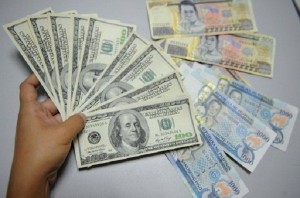BSP braces for hike in US interest rates
The United States Federal Reserve has announced the long-awaited end to its massive monetary stimulus as the recovery of the American economy from the worst financial crisis in decades gains more traction.
The focus now of Philippine monetary officials is on the prospect of higher interest rates in the United States—a logical next step, even though the US Fed said it would put off the hike for as long as it could.
Local monetary authorities welcomed the news, saying the end of quantitative easing (QE) concluded more than a year of uncertainty over the fate of the Fed’s bond-buying program, which started flooding global markets with cheap cash in 2009.
“This confirms the underlying strength of the US economy,” Bangko Sentral ng Pilipinas (BSP) Governor Amando M. Tetangco Jr. Friday told reporters. “We will remain watchful of market conduct, particularly in the near-term in the spot foreign exchange market, to check for threats of possible excessive moves, and if there is need for BSP to act.”
On Friday, the peso depreciated to 44.90 against the dollar, from 44.715: $1 the day before.
Plans to reduce and eventually end the Fed’s massive bond-buying program was announced in the middle of last year. The Fed’s asset purchases was designed to push interest rates down by flooding the American economy with cash. At its peak, the Fed was buying $85 billion worth of mortgage-backed securities and US Treasuries every month.
The program pushed interest rates in the United States to record lows, forcing private sector investors to search for higher yields. The flood of cash from the United States also benefited asset prices in countries like the Philippines. As the flow of cash reversed, and would likely continue to do so in the coming months, market volatility could be expected.
“We expect a repricing of assets as risk premiums will inevitably change,” said Herve Lievore, senior macro and investment strategies at HSBC’s Global Asset Management Group.
In a statement issued this week, the Fed said it would keep its borrowing at the current near-zero rate for a “considerable time.” Earlier this month, Fed Chair Janet Yellen expressed her concern over the sharp climb in the dollar’s value, which could destabilize other economies.
Tetangco said this gave the BSP some “latitude” to keep its own rates steady. The BSP’s overnight borrowing and lending rates were each hiked from record lows by half a percentage point to 4 and 6 percent, respectively, as Monetary Board sought to counter inflationary pressures.
With the pace of price increases likely having peaked in July and August, the BSP kept its policy rates steady earlier this month.

